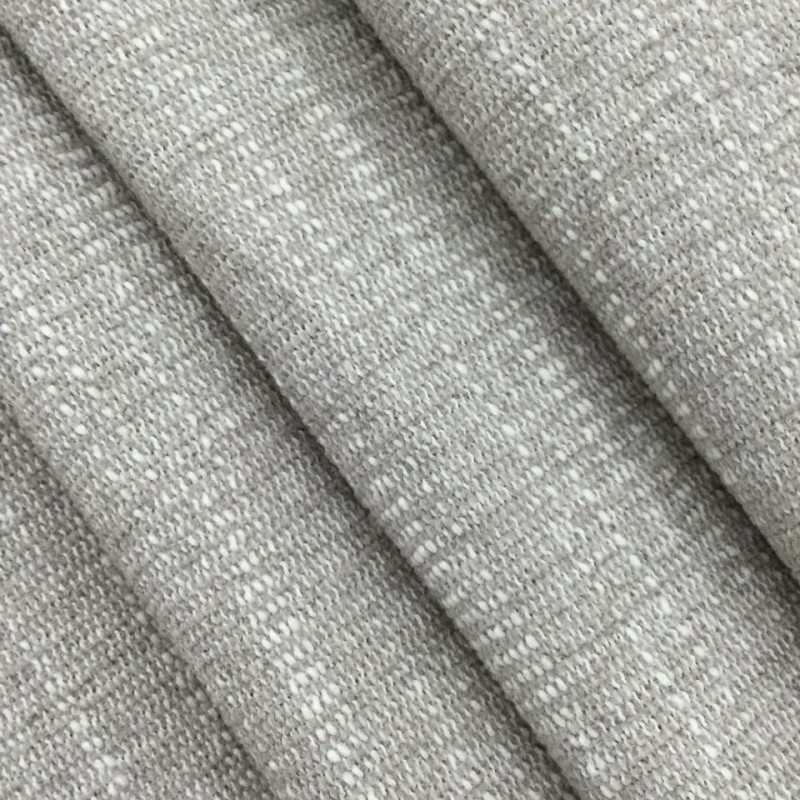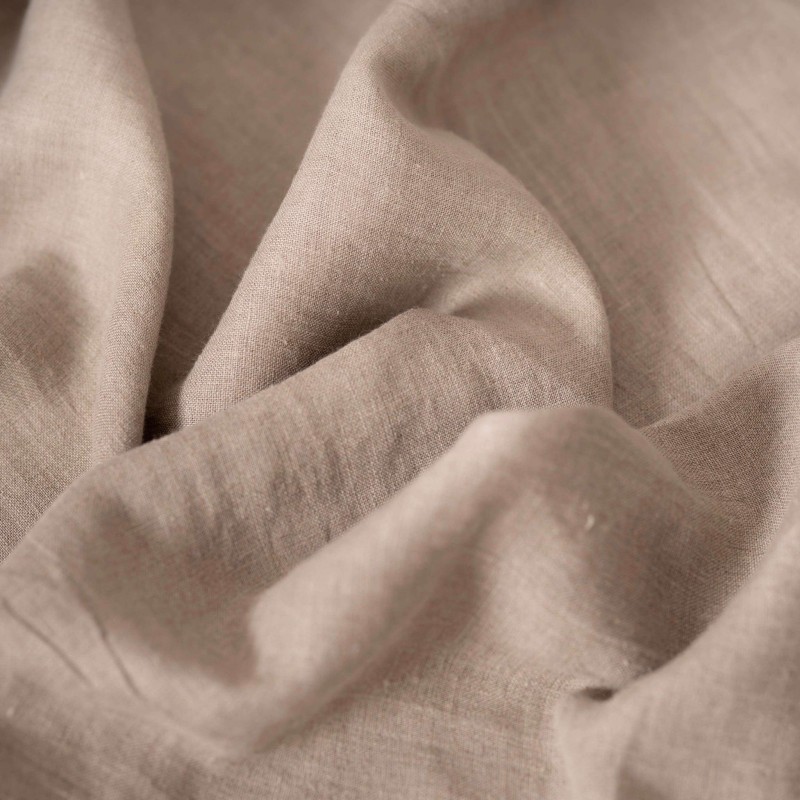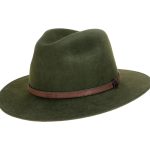Linen fabrics have long been cherished for their unique blend of elegance, comfort, and functionality. Derived from the fibers of the flax plant, linen has been a staple material in textiles for thousands of years. People revere linen not only for its lightweight and breathable qualities but also for its distinctive texture and natural luster. The way linen fabrics drape beautifully and feel against the skin makes them a preferred choice for everything from fashion garments to home decor. As a versatile fabric, linen can serve in various applications, making it a timeless favorite across cultures and generations. Whether you’re looking to understand how linen fits into modern fashion or considering it for home décor, grasping the features, benefits, and proper care of linen fabrics can help you appreciate and utilize this splendid material effectively.

The History of Linen Fabrics
Linen fabrics boast a rich history dating back to ancient civilizations. First cultivated more than 10,000 years ago, flax plants served as the foundation for linen production in regions like ancient Egypt. Archaeological findings show that linen clothing decorated mummies, highlighting its cultural significance and utility.
In ancient Egypt, people prized linen for its qualities, linking it to purity and immortality. They used it during religious ceremonies and crafted burial garments. As time progressed, linen gained popularity in medieval Europe. The elite often wore linen, transforming its use into a symbol of wealth and social status.
Additionally, linen extended beyond clothing. People utilized linen fibers for tablecloths, napkins, and bedding materials, showcasing linen’s multifunctional applications. Over the centuries, the production of linen fabrics evolved, but the core qualities that made it desirable remained intact. Even today, linen thrives in modern fashion and home textiles, serving as a reminder of its historical roots while adapting to contemporary trends.
The Process of Making Linen Fabrics
To appreciate linen fabrics fully, one must understand how manufacturers create this versatile textile. The production process involves several key steps. First, the journey begins with the cultivation of flax. Flax thrives in cool climates and requires specific growing conditions, making it a labor-intensive crop overall. Farmers harvest flax flowers, allowing them to dry before collecting the seeds.
After harvesting, growers uproot the entire plant when its stems begin to turn yellow. For a few days, they leave it to dry, preparing it for retinue. During the retting process, moisture and bacteria break down the pectins that separate the fibers from the woody stalk. Manufacturers can perform retting using water in ponds or dew in fields, depending on their desired quality.
Once retting is complete, the dried stalks go through braking and scutching. This process involves mechanically breaking the stalks apart and extracting the fibers. After which, producers clean the fibers, creating long lengths of flax ready for spinning. Next comes the spinning stage where the cleaned fibers become just yarn, transforming into fine or coarse strands to suit various applications.
Then, artisans weave the spun fibers together on looms, shaping them into linen fabric. Finally, the finishing step involves treating the fabric to enhance its softness, strength, and durability. This treatment might include washing, bleaching, or dyeing the linen, depending on the intended use and desired appearance.
Types of Linen Fabrics
When exploring linen fabrics, recognizing the various types available helps consumers choose correctly. Each linen type offers distinct characteristics suitable for different applications.
Pure Linen emerges as the most notable option, made from 100% flax fibers. This variation provides exceptional breathability and moisture-wicking properties. Many people prize pure linen for its natural texture and luxurious feel. It is perfect for high-quality garments and home textiles.
Linen blends also stand out for their desirability. By mixing linen with synthetic fibers like cotton, polyester, or rayon, manufacturers enhance specific qualities while maintaining the elegance of linen. Blends can benefit from the durability of synthetics or the softness of cotton, catering to diverse consumer preferences.
Linen sheeting appears lightweight and smooth, making it a popular choice for bed linens, tablecloths, and other home textile products. The smooth texture adds comfort and a refined aesthetic, making it perfect for any household.
Linen canvas, on the other hand, proves heavier and more durable than regular linen. It works well for upholstery, bags, and outdoor gear. Its strength, combined with sturdiness, makes it suitable for products that require longevity and resilience.
Another option, embroidered linen, features decorative embroidery that adds an ornate touch without compromising the fabric’s inherent qualities. People often use embroidered linen for table settings and fashion accessories that enhance visual appeal.
Finally, textured or linen jacquard presents intricate woven patterns, offering an elegant statement of style. Many find jacquard linen fabrics in high-end garments and luxurious home textiles due to their splendid designs.
Benefits of Using Linen Fabrics
Linen fabrics offer numerous advantages that make them an appealing choice for various applications. Here are some noteworthy benefits:
Breathability stands out as one of linen’s most remarkable qualities. Linen fabrics allow air circulation against the skin, making them ideal for hot and humid conditions. This property keeps the wearer cool and comfortable, thus making linen a popular choice for summer clothing.
Moisture absorption complements linen’s breathability. Linen can absorb sweat without feeling damp, enabling wearers to remain comfortable in warm weather or during vigorous activity. Plus, it dries quickly, which adds to its functionality.
Durability proves another significant benefit. Known for its strength, linen fabrics withstand wear and tear effectively, making them suitable for everyday use. Additionally, linen can last for years while becoming softer and more comfortable over time, which further adds to its desirability.
Hypoallergenic properties also make linen fabrics suitable for sensitive skin. As a natural fiber, linen is less likely to cause allergies or irritations compared to synthetic fabrics. Therefore, it ensures comfort for all wearers.
Moreover, linen is eco-friendly. As a natural fiber, linen biodegrades, making it an excellent choice for environmentally-conscious consumers. Furthermore, cultivating flax typically requires fewer pesticides and fertilizers compared to other crops, adding to linen’s eco-friendly credentials.
Finally, linen’s timeless aesthetic contributes to its popularity. Its elegant texture and natural appearance make it a seller’s favorite. Designers appreciate how linen effortlessly blends with various styles, enhancing any setting with its warm and classic charm.
Styling and Using Linen Fabrics
Understanding how to style and use linen fabrics effectively can elevate your fashion choices and home decor. By incorporating linen appropriately, you can maximize its advantages and aesthetic appeal.
In fashion, linen clothing becomes a perennial favorite for summer styles. Due to its lightweight and breathable nature, consider linen shirts, dresses, and trousers that keep you comfortable while looking chic. Pair these garments with stylish shoes or accessories to create a complete outfit.
When accessorizing, linen scarves and hats can add flair. These accessories provide versatility while offering both protection and style. Furthermore, they can layer perfectly with other outfits for a polished look.
In home decor, linen proves ideal for curtains, tablecloths, and pillow covers. Its soft draping quality creates an inviting atmosphere in any room, allowing you to enjoy a combination of comfort and elegance. Furthermore, layering linen with other fabrics enhances décor. For instance, pairing linen textiles with cotton throws or silk cushions can create rich textures and visual interest.
Choosing linen bed linens guarantees a more luxurious sleeping experience. The breathable nature of linen promotes comfort, helping you stay cool in summer while feeling cozy in winter.

Caring for Linen Fabrics
To maintain the quality and longevity of linen fabrics, proper care becomes essential. Here are some helpful tips for keeping your linen items in pristine condition:
When washing linen, use cool or lukewarm water. Hot water can lead to shrinkage, so always opt for cooler temperatures. Moreover, choose a gentle detergent to respect the natural fibers and preserve their integrity and appearance.
For drying, avoiding tumble drying is wise, as excessive heat can weaken the fibers. Instead, air dry or line dry to maintain the quality of your fabric. If you must use a dryer, select a low-heat setting and remove the fabric while it’s still slightly damp to prevent wrinkling.
Ironing linen frequently results in wrinkles, but this is part of its charm. However, if you prefer a smoother appearance, iron linen while it’s still slightly damp. Using a steam iron for the best results can also help eliminate creases and enhance the fabric’s look.
When storing your linen, keep it in a cool, dry place away from direct sunlight to prevent fading and discoloration. Additionally, fold linen carefully to avoid creasing, or roll it up to maintain its shape and quality over time.
The Future of Linen Fabrics
As consumer preferences shift toward sustainability and eco-friendly choices, linen fabrics are likely to gain popularity in the textile industry. With a growing emphasis on natural fibers, linen’s benefits position it well for future trends. Some anticipated developments include:
Innovative blends may emerge in the future. Researchers will explore new synthetic and natural fiber combinations that can lead to exciting textiles. Such innovations aim to enhance the properties of linen while improving functionality to meet modern consumer needs.
Sustainability initiatives will continue to grow as awareness increases. Brands may begin focusing on ethical sourcing and production processes, emphasizing transparency and sustainability in linen fabric manufacturing.
Additionally, technology integration could prove beneficial for the linen industry. Manufacturers may employ advanced processes that enhance fabric performance, improving qualities such as moisture-wicking and odor resistance while retaining the natural appeal of linen.
The aesthetic trends in fashion and home decor may evolve as well. Designers may continue to reinterpret linen in innovative styles and colors, leading to creative uses of linen fabrics in avant-garde fashion designs and home textiles.

Conclusion
Linen fabrics are a remarkable textile choice that marries tradition with modern-day sensibilities. With their rich history, incredible versatility, and unique benefits, linen fabrics enjoy global appreciation. Understanding where linen comes from and how it is made enhances one’s appreciation for this timeless material.
By incorporating linen into fashion and home decor, consumers can enjoy its splendid qualities while creating aesthetic harmony. As these fabrics gain popularity, it is essential to ensure proper care and maintenance to extend their lifespan.
In conclusion, whether you’re dressing in lightweight linen for a summer outing or adorning your home with elegant linen textiles, investing in linen fabrics reflects a commitment to quality, sustainability, and style. Let linen bring both comfort and sophistication to your life while you enjoy its natural beauty for seasons to come.

